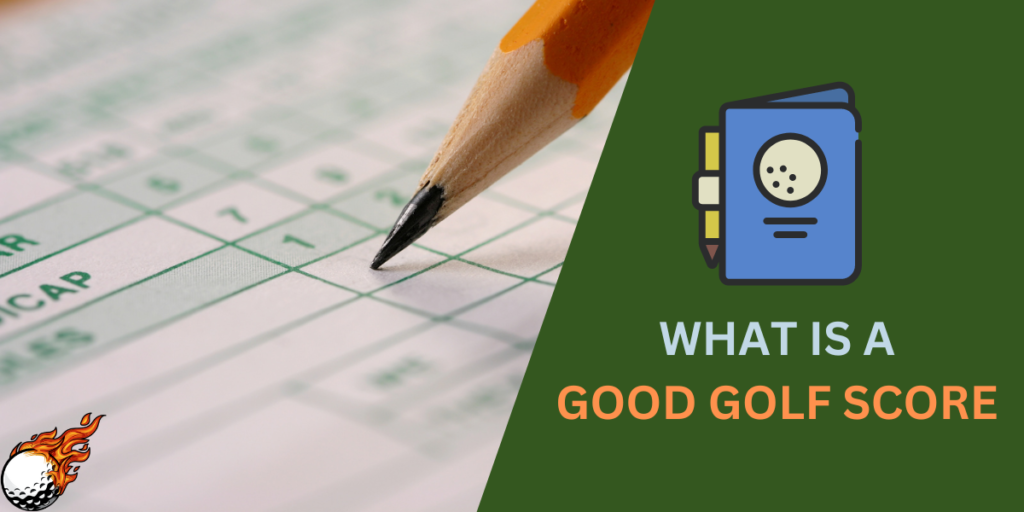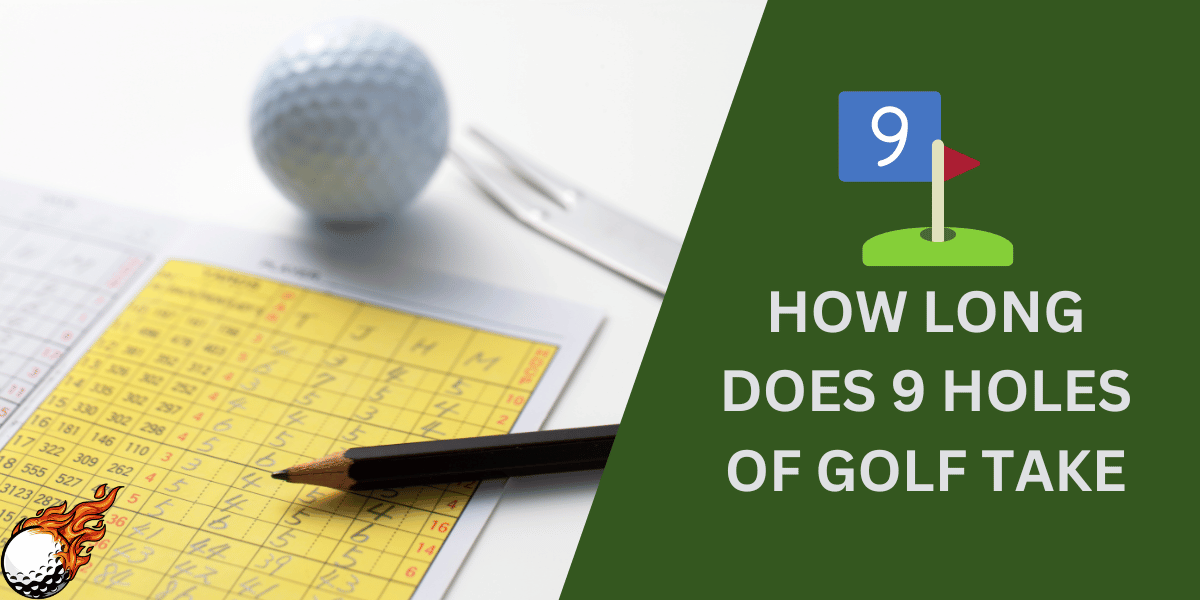
Ever teed off on a beautiful day and wondered what a ‘good’ golf score actually is?
Sometimes it feels like everyone else is way better than you.
The truth is, there’s no single answer. Skill level, the golf course you play, and even your own goals all matter.
This guide will break it down! We’ll look at what the average golfer scores, plus what counts as a good score for beginners, serious players, and even pros.
Get ready to understand your scores and hit the links with confidence!
What’s a “Good” Golf Score? It Depends!
- Beginners: Breaking 120 is a win. Aim to consistently score under 100.
- Average Players: Shooting 90-100 is common. Breaking 90 is a solid goal.
- Skilled Players: Consistently scoring in the 80s is strong, low 70s or below is very good.
- Course Difficulty Matters! A 90 on a tough track is more impressive than the same score on an easy one.
- It’s Personal: Focus on improving your own scores and having fun!
What Do Those Golf Scores Even Mean?
Let’s face it, golf scores can be confusing. Here’s a breakdown of what’s considered average, good, and even “pro level” when playing golf.
- Beginners: The Starting Line
- New to golf? Don’t sweat it! Most beginner golfers shoot way over 100.
- Your first big win: Breaking 120! That’s a solid score for a newbie.
- A truly good beginner score means aiming for rounds under 100.
- Getting Better: Average Golf Scores
- Played for a while? You might average between 90-100 for 18 holes.
- A decent score at this level means consistently breaking 90.
- Feeling ambitious? Consistent rounds in the 80s are considered good scores.
- Serious Players: Aiming Low
- If you’re below 80 on average, you’re crushing it.
- Decent scores here mean the high 70s.
- Good scores are consistently in the low 70s or even flirting with par.
- The Pros: A Whole Other Game
- Professional golfers often shoot under par, which means scores in the 60s!
- Their average scores are way lower than what most of us could dream of.
Important Note: Course Difficulty Matters!
- Course Rating & Slope Rating: Think of these as a golf course’s difficulty level.
- Example: Shooting 90 on a super tough course is better than a 90 on an easy track.
Pro-Tip: Don’t compare your scores to people playing different courses. It’s apples and oranges!
Understanding Golf Scores
| Golfer Skill Level | Average Score (18 Holes) | “Good” Score (18 Holes) | “Great” Score (18 Holes) | Handicap Impact |
|---|---|---|---|---|
| Beginner | 120+ | Breaking 100 | Breaking 90 | Low impact (higher handicap) |
| Average Player | 90-100 | Breaking 90 | Consistent 80s | Moderate impact |
| Skilled Player | 80-90 | Consistent 80s | Low 70s or below (Par or better) | High impact (lower handicap) |
| Professional | Under Par (often in the 60s) | Course record or lower scores | Consistent low scores in tournaments | Minimal impact (scratch golfers have a 0 handicap) |
Additional Notes:
- Scores are based on the total number of strokes a golfer takes to complete all 18 holes.
- “Par” refers to the established number of strokes a skilled golfer should take on each hole. A score equal to par is considered excellent.
- A handicap is a numerical rating system that evens the playing field for golfers of different skill levels. It allows golfers to compete fairly, regardless of their average score.
What Makes a Score “Good”
Okay, now we know the basic ranges for golf scores. But what really makes a score “good” for YOU? Here’s the deal:
- Your Skill Level Counts!
- A beginner breaking 100 is awesome, but the same score is pretty bad for a seasoned player or scratch golfer.
- Focus on progress against your own past scores, not just your fellow golfers.
- Course Difficulty Matters (A Lot!)
- Most golf courses are rated for difficulty.
- Shooting 90 on a tough course is more impressive than 90 on an easy one for most golfers.
- Are You Having Fun?
- Competitive play is different than a relaxed round with friends.
- A “good” score is whatever helps you enjoy your golf game more.
- What’s Your Handicap Index?
- This little number helps level the playing field between golfers playing different skill levels.
- Don’t stress if yours is high when you start – it’ll improve as you improve!
- Not Every Round Is Perfect – Even for the Pros
- Everyone, from the average player to the professional golfer, has bad days on the course!
- A good score often means not letting a few double bogeys (or worse) ruin your day.
- Focus on the Short Game
- Recreational golfers often see HUGE improvement by getting good around the greens.
Pro-Tip: Think of a ‘good score’ as something you achieve consistently, not in a one-off lucky round. A seasoned bogey golfer may not consider breaking 80 great if they usually score higher.
Example: If you’re usually around 100 but suddenly shoot an 85, that’s amazing! But until you can average in the 80s, that 85 isn’t your new “good” score benchmark. Consistency is key!

How to Get Those Good Golf Scores Rolling In
We know what those ‘good’ golf scores look like. Now, how do you get them? Here’s the plan:
- The Big Three Skills
- Long Game: Driving it far (and accurately!) gives you a big advantage when tackling a golf course.
- Short Game: Master chipping and putting to save tons of strokes. This is where many golfers, even experienced ones, can lower their scores.
- Course Management: Knowing when to play it safe or go for the big shot. Choosing smart strategies based on golf course difficulty matters.
- Practice vs. Play: Both Matter!
- Hitting balls at the driving range is crucial for building your swing, which affects your average golf score.
- Playing rounds on the entire course lets you practice real-life situations and is crucial for a beginner golfer.
- Your Mental Game is Key
- Don’t let one bad hole (or even a bad golf score!) ruin your whole round.
- Staying positive helps you play better in the long run and improves your overall score.
How Good Should YOU Aim To Be?
This depends on your goals and how much time you’re willing to spend practicing:
- Casual Golfer: Breaking 100 is a great score and a milestone for recreational players! Focus on making consistent play more fun.
- Getting Serious: Aiming to consistently break 90 puts you in a strong group of amateur golfers with a good understanding of the game.
- Dreaming Big: Breaking 80 regularly is impressive. Scratch golfers (who can shoot even par) are extremely skilled players.
Pro-Tip: Don’t compare yourself to players on the PGA Tour! They live and breathe golf – that’s their job!
Fact: Most courses rate “par” for how many strokes a good player should take on average to play the hole or whole course. If you equal par, it’s definitely considered a good golf score!
Conclusion
The truth is, there’s no single “perfect” golf score.
It depends on your skill level, the golf course you’re playing, and even your own goals. Here’s what matters most:
- Focus on Progress: Instead of beating yourself up over a bad score, track your progress over time. Are you consistently getting a lower score? If so, you’re on the right track!
- Get That Handicap: It’s a great way to compare your scores fairly, no matter what course you play. A lower score generally relates to a lower handicap (and a better golfer overall).
- Don’t Forget the Fun: Even with tough rounds, golf is a blast! Focus on enjoying the game, and those good scores will follow.

Quick Tip: Worried about a slow score on a busy course, especially as a beginner or average golfer? Play 9 holes instead of a full 18. It’s a great way to practice and respect other players’ time while still improving your average score!
Now, get out there and play some golf!
Frequently Asked Questions
What is considered a good score for 9 holes?
Half of a “good” 18-hole score is an excellent target. So, breaking 50 on nine holes is solid, and shooting in the 40s is impressive. Remember, course difficulty makes a big difference!
How does my handicap affect my “good score”?
Your golf handicap gives you extra strokes as a way to even the playing field. A high handicapper breaking 100 is better than a low handicapper shooting the same, as their potential is higher.
I’m a beginner; what’s a realistic “good score” for me?
Start by aiming to break 60 for nine holes. Once achieved, try for the 50s! For 18 holes, breaking 120 is a great beginner milestone.
Why do some courses seem way harder than others?
Courses have difficulty ratings! An average golfers shoot might be 90 on a “normal” course, but 100+ on a very challenging one. Don’t get discouraged – focus on improvement over time.
Do professional golfers ever have bad scores?
Absolutely! Even top pros have off days, bad breaks, and the mental pressure of huge tournaments. Remember, golf is HARD, even for the best in the world.












